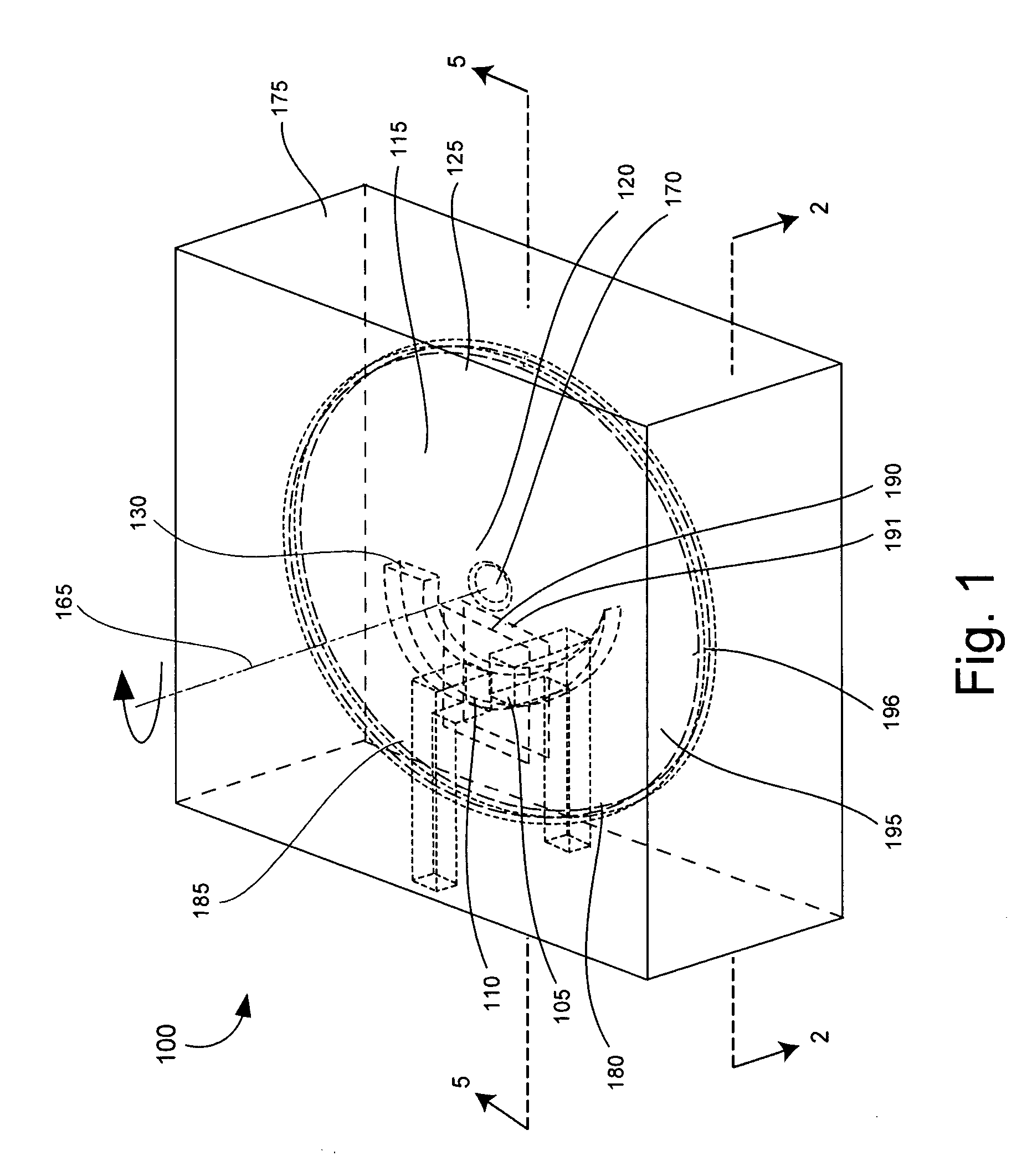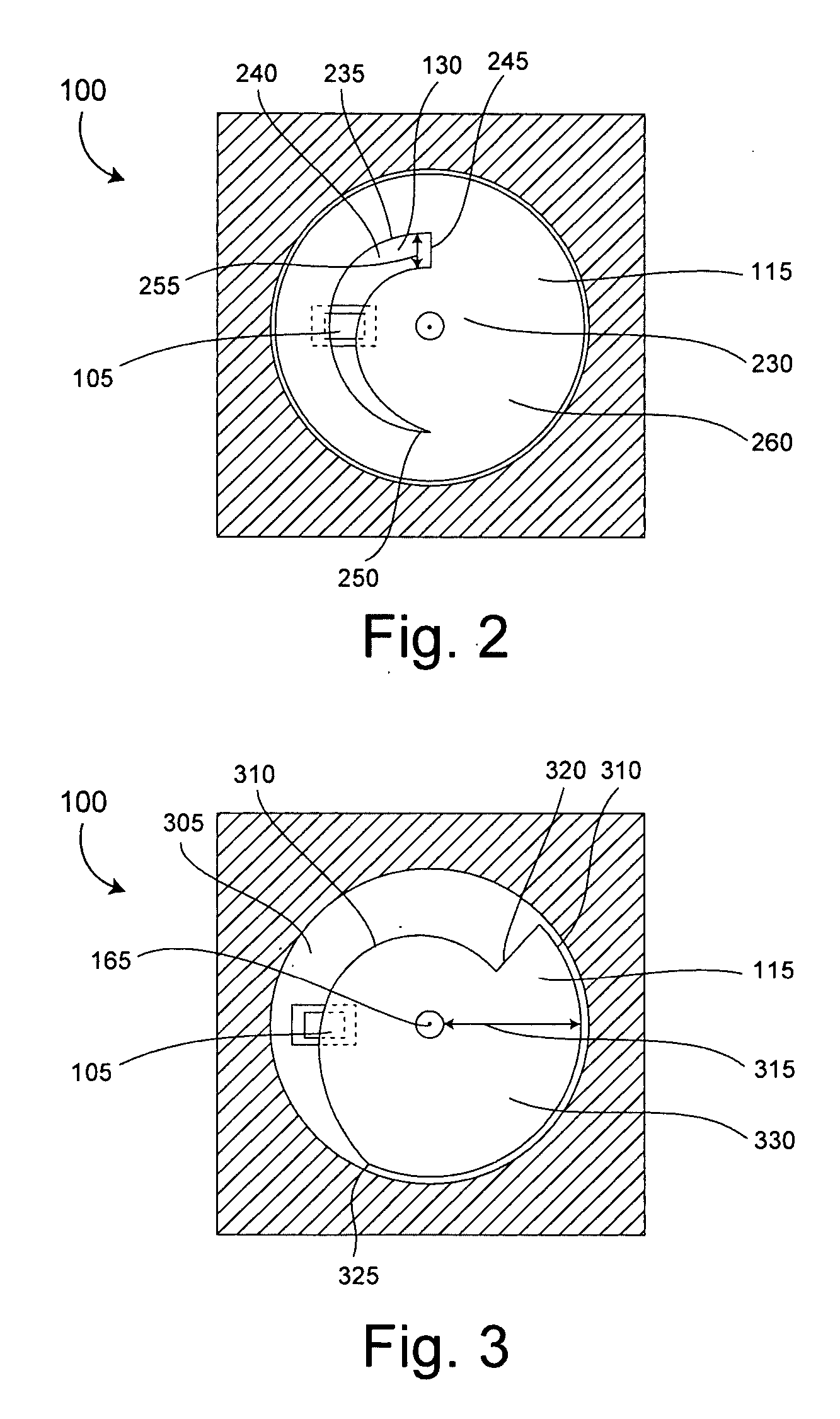Embedded control valve using homopolar motor
a technology of homopolar motor and control valve, which is applied in the direction of valve housing, valve operating means/releasing devices, electrochemical generators, etc., can solve the problems of affecting the miniaturization effort, affecting the miniaturization effect, and affecting the design of microcells
- Summary
- Abstract
- Description
- Claims
- Application Information
AI Technical Summary
Problems solved by technology
Method used
Image
Examples
Embodiment Construction
[0022] The present invention relates to a microfluidic control valve (control valve). The control valve can be used in microfluidic systems to control a fluid flow rate, as well as to turn on and turn off fluid flow. Importantly, the control valve can be embedded in a substrate containing a fluid flow channel through which the fluid flows. The control valve can include a microelectromechanical homopolar motor (homopolar motor) to impede fluid flow as required via rotation of a disk having at least one orifice through which the fluid can flow. Through the rotation of the disk, the alignment of the orifice with respect to a fluid flow port can be varied, and thus provide a variable fluidic impedance. Notably, the disk can be very small. For example, the disk can have a diameter that is smaller than 1 cm, or even smaller than 1 mm. Accordingly, the system profile of the microfluidic system is smaller in comparison to fluidic systems using discrete components. Additionally, there are a ...
PUM
 Login to view more
Login to view more Abstract
Description
Claims
Application Information
 Login to view more
Login to view more - R&D Engineer
- R&D Manager
- IP Professional
- Industry Leading Data Capabilities
- Powerful AI technology
- Patent DNA Extraction
Browse by: Latest US Patents, China's latest patents, Technical Efficacy Thesaurus, Application Domain, Technology Topic.
© 2024 PatSnap. All rights reserved.Legal|Privacy policy|Modern Slavery Act Transparency Statement|Sitemap



